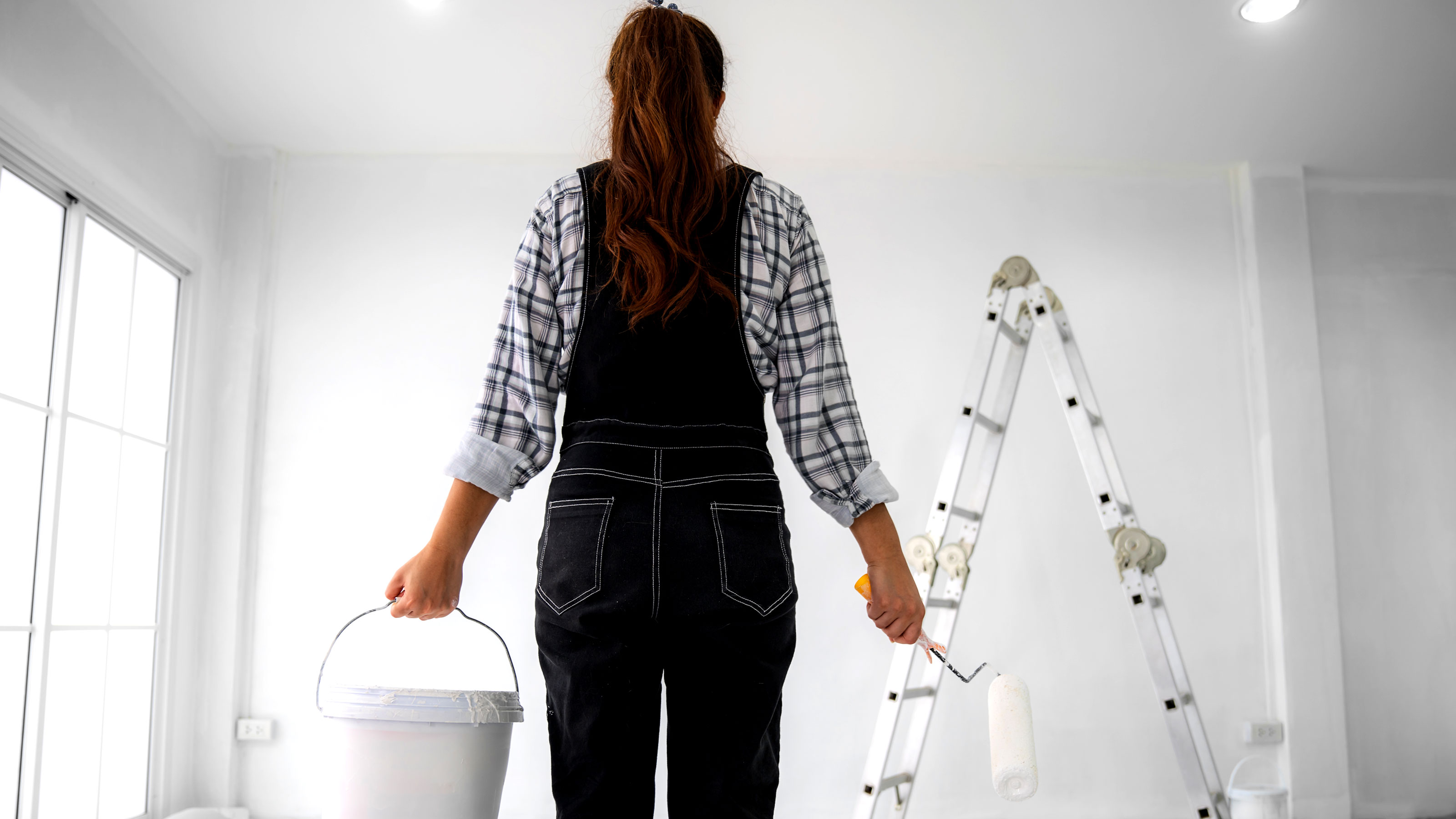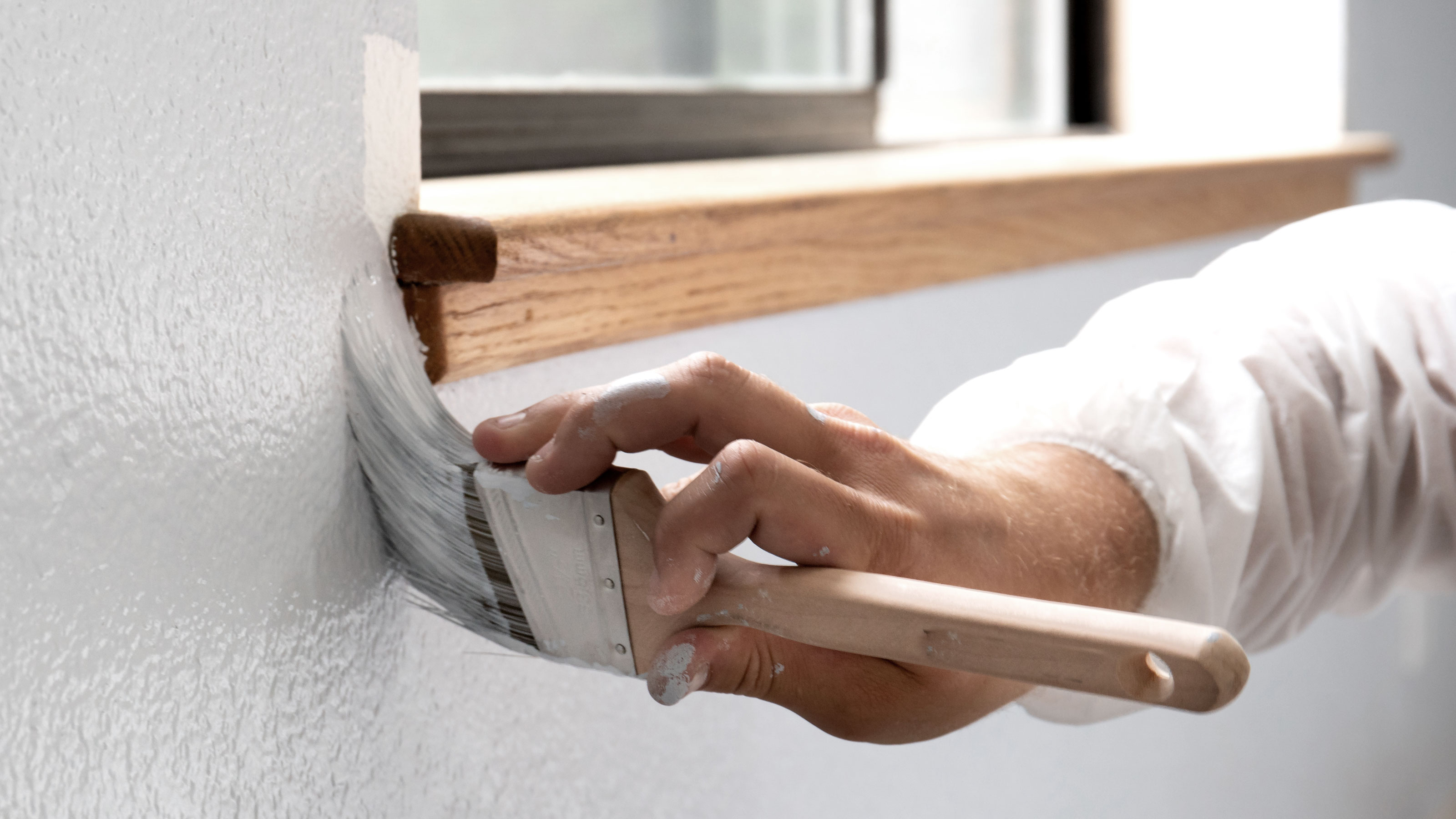How long between coats of paint? Discover drying times and why you shouldn’t add another coat too soon
Want to know how long between coats of paint you need to wait? There isn't a straightforward answer, but we are here to help and tell what you need to know

Knowing how long between coats of paint is important, especially when assessing when might be the ideal point to start painting a second coat. If you put on a coat of paint before the previous coat is dry, you could be heading for trouble.
Whether you are painting a wall, doors, or skirting boards you need to make sure that the previous coat is clean and dry. But, drying times for different paints are all over the place. So, don’t make assumptions, check out our guide below as well as the manufacturer's recommendations to plan your paint project before you even open the tin.
How long between coats of paint?
There’s a lot of factors that contribute to how long you should wait before adding another coat of paint. The most obvious one is what type of paint you are using. Water-based paints typically dry quicker than oil-based, so if using a water based paint you will be able to recoat sooner.
But it’s not that simple. Different types of water based paints dry quicker than other water based paints. For example, a water-based wall emulsion like Dulux Brilliant White Emulsion will be dry and recoatable in two hours, while Dulux Trade Pure Brilliant White Matt Emulsion (from B&Q) will be dry and recoatable in around four hours.
To further emphasise the difference a water based wood paint like Dulux Quick Drying Satinwood (from B&Q) will be dry and ready for another coat in around six hours.
And oil based paints are no different. Dulux Trade Satinwood from B&Q takes around four hours to be touch dry and is ready to recoat in 16-24 hours. But, at the other end of the scale is the oil-based primer Zinsser Cover Stain (from Amazon), this is touch dry in 30 minutes and ready for another coat in two hours.
So while the general rule is water-based paints can be recoated quicker than oil based points, it's always worth checking the manufacturer's recommendations.
Problems if you paint another coat too early
If you don’t leave paint to dry long enough between coats it can lead to a host of problems. One of the common problems is paint bubbling. This where the first coat hasn’t dried properly, so when the second is applied it starts to lift off the surface leaving bubbles.
Another issue can be flaking or peeling, the cause is much the same as bubbling, but the paint starts to lift and crack and reveals the base of whatever surface you are painting, i.e wood or plaster.
All of these problems will need dealing with to get a decent finish. You can’t simply wait for it to dry and add another coat. You will need to remove the paint, prep the surface and paint again.
An unwanted patchy finish – especially when emulsioning walls and ceiling – can be another issue. If the first coat of paint is not put on evenly, you can be painting over areas that are not as dry as other areas. This means that wet or partly dried areas will mix with the second coat while the dry areas won’t, causing the patchy finish.
So knowing how long paint takes to dry can help eliminate these problems and save you a lot of extra unwanted work.
Can I do three coats of paint in a day?
Yes, but it will depend on what type of paint you are using, and it's worth noting that three coats isn't always needed. For example, if you are emulsioning white walls with a fresh coat of white emulsion, you should only need two coats. Or, if you are adding a dark colour over a light colour. And, a lot of emulsions can have another coat added after two hours. So adding three coats of emulsion is very doable in one day.
However, if you are using a wood paint, even a water based one, you need to leave for around 4-6 hours between coats so realistically you will only be able to add two coats in a day. If you are using a slow drying oil-based paint, you should only apply one coat a day.
Planning ahead and knowing how to paint a room in the right order will help you decide on what you paint first and how many coats can be applied.
Do you cut in every coat?
Yes you do. If you are painting walls, ceilings or woodwork you need to know how to cut in to get a clean even finish. If you are using two coats of paint you will need to cut in twice, once for each coat. If you only cut in on the first coat, it will not cover as well as two coats and leave noticeable edges when the second coat goes on.
If you are painting a light colour over a dark colour you will probably need at least three coats to cover properly. So you will need to cut in three times, one for each coat.

Is four coats of paint better than two?
As a general rule you need two or three coats of paint for most paint jobs. Walls and ceilings typically need two coats of paint to cover and give a good finish. You may need more coats if you have cheap paint. Adding a third and fourth coat won’t spoil the finish, but it will take you a lot longer to get the job finished.
If you are painting wood white then two coats will not be enough if you are starting from bare wood. You will need at least one coat of primer, one or two coats of undercoat and one or two coats of your chosen top coat like Dulux Trade High Gloss from B&Q.
How can I speed up the drying of paint?
There are a few things that you can do to help paint dry quicker. A simple one is to apply thin coats of paint rather than thick coats, which is how you should apply paint anyway. If your paint is too thick it is more likely to run and chip when dry.
Ventilation is a key factor in helping paint dry. Open windows to let air flow through the room, ideally during the day, when the weather is at its warmest. During the winter or cold months, open the window, but also have a heat source in the room. If a room is too cold – below 10 degrees Celsius – your paint can take a lot longer to dry.
You can use a fan to help move air around a room if too hot, but this can also disturb dust that may get on your paint, so vacuum and position the fan carefully.
Get the Homebuilding & Renovating Newsletter
Bring your dream home to life with expert advice, how to guides and design inspiration. Sign up for our newsletter and get two free tickets to a Homebuilding & Renovating Show near you.
Steve Jenkins is a freelance content creator with over two decades of experience working in digital and print and was previously the DIY content editor for Homebuilding & Renovating.
He is a keen DIYer with over 20 years of experience in transforming and renovating the many homes he has lived in. He specialises in painting and decorating, but has a wide range of skills gleaned from working in the building trade for around 10 years and spending time at night school learning how to plaster and plumb.
He has fitted kitchens, tiled bathrooms and kitchens, laid many floors, built partition walls, plastered walls, plumbed in bathrooms, worked on loft conversions and much more. And when he's not sure how to tackle a DIY project he has a wide network of friends – including plumbers, gas engineers, tilers, carpenters, painters and decorators, electricians and builders – in the trade to call upon.

